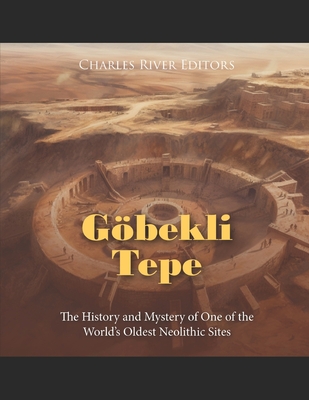You are here
Back to topGöbekli Tepe: The History and Mystery of One of the World's Oldest Neolithic Sites (Paperback)
$9.99
Usually Ships in 1-5 Days
Description
When one thinks of the world's first cities, Sumer, Memphis, and Babylon are some of the first to come to mind, or if the focus then shifts to India, then Harappa and Mohenjo-daro will likely come up. But archaeologists recently uncovered a site thousands of years older than any of those, marking one of the oldest settled sites in the world. The Neolithic period came before the Bronze Age and is generally regarded as the final subdivision of the Stone Age. During this time, communities domesticated plants and certain animals but still relied on hunting and gathering to a considerable extent, and beginning sometime around 7000 BCE, handmade pottery was developed, along with more advanced stone axes that enabled people to clear vast forests. Thanks to tools like that, the sizes of these Neolithic communities ranged from thousands to as few as a hundred, and they spread across the world with a variety of cultures and languages. One aspect these cultures had in common was that they relied on similar tools made of stone, wood, and bone. Despite the fact some Neolithic communities grew to considerable sizes, they're typically not considered when people think of the first ancient civilizations or the first major cities, so when German archaeologists discovered the archaeological site of G bekli Tepe in southeastern Turkey in the 1990s, it created an academic firestorm that is still raging. Far from being just another settlement, G bekli Tepe has been described as the world's first temple and perhaps one of the locations where human civilization began. Subsequent archaeological work at G bekli Tepe has revealed that the site was a spiritual center for the local population during a time when humans were undergoing a transition as hunter-gatherers in the Paleolithic Period to a more sedentary lifestyle in the Neolithic Period, more than 10,000 years ago. Further research in the disciplines of anthropology, religion, and history indicate that the activity at G bekli Tepe subsequently set the tone for elements of Neolithic and Bronze Age religion and ideology in the Near East, especially in Anatolia (roughly equivalent with modern Turkey). Although many elements of G bekli Tepe's history remain an enigma, and probably will in the future due to the nature of the source material, the relatively recent work at the site has helped historians speculate about how Near Eastern people lived in the Mesolithic Period, how those lifestyles evolved, and how they contributed to the history of the era.
